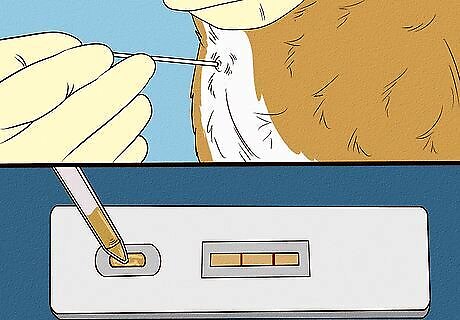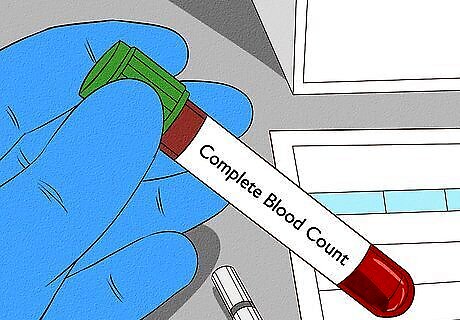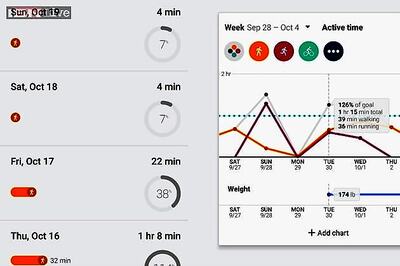
views
X
Research source
The virus is common in puppies. Experienced dog owners and breeders often panic when they suspect one of their dogs has parvo; they know how quickly the condition advances and how lethal it can be. If your dog has parvo, getting to a veterinarian quickly can increase the odds of survival. Your vet will be able to tell you whether you're dealing with parvo or another canine disease like bacterial hemorrhagic enteritis, coccidiosis, or hookworm infestation.
Recognizing the Symptoms of Parvo

Monitor your dog’s behavior. In general, the first sign of a parvo infection is lethargy. Your dog may become less active, eventually retreating to a corner and staying put. You might also notice that they don't have much of an appetite or they start to seem weaker than normal. Parvo usually progresses quickly—lethargy is often quickly followed by vomiting and diarrhea.

Watch for fever. Dogs with parvo usually develop a high fever. Signs of fever might include warm ears or a warm nose and red eyes. You can also use a rectal thermometer or an ear thermometer to take your dog's temperature—if it's higher than around 101–102.5 °F (38.3–39.2 °C), they have a fever. Any change in temperature can be a sign—some dogs will have a lower-than-normal body temperature, instead.

Pay attention to vomiting. Parvo attacks the rapidly dividing cells that line the stomach and intestines. This causes your dog's stomach to become irritated and ulcerated, which leads to severe vomiting. Since your dog can't hold down food or water, they can quickly become severely dehydrated and malnourished, which can lead to shock or even death.

Pay attention to your dog’s stools. Typically the diarrhea associated with parvo is particularly severe. Some people say that it has a unique smell that's different than your dog's normal stools. Their stool also frequently contains blood. If you see this, take your dog to the vet right away.

Check for signs of anemia. Parvo causes gastrointestinal bleeding, which can lead to anemia. To see if your dog might be anemic, press down on the gums. A healthy dog’s gums will quickly return to their normal color, usually within two seconds; if it takes longer, your dog may be anemic. Anemia may also lead to a noticeable paleness of the gums.

Be especially mindful of parvo if you have a puppy. Although it can affect older dogs, parvo most commonly occurs in puppies between 6 and 20 weeks of age. Parvo is especially serious in puppies because their immune system hasn't fully developed yet. In addition, vaccination may not be fully effective until your puppy is between 14 and 16 weeks old because antibodies in their mother's milk may interfere with the vaccine. It can be hard to spot the early signs of parvo in a puppy, which unfortunately means the mortality rate can be high for younger dogs. Pay close attention to any changes in their behavior and take them in to the vet if you think anything's amiss.
Diagnosing Parvo

Take your dog to a veterinarian immediately. Unfortunately, parvo is fast acting—it can be fatal in just 48–72 hours after the first symptoms appear. If you can get your dog to the vet quickly, though, they'll have a much better chance of recovery.

Ask your vet to do an ELISA test. To diagnose parvo, your veterinarian may perform the Enzyme-Linked ImmunoSorbent Assay (ELISA) test. This test checks your dog’s stool for evidence of parvo. It can be done in your veterinarian’s office, and the results will come back in about 15 minutes. The ELISA test gives rapid results, but sometimes false positives do occur, so your vet may recommend further testing, like taking a white blood cell count or sending a sample to a lab. On the other hand, more testing to confirm parvo may not really be necessary. The parvovirus causes severe illness. Since the condition is managed with supportive care rather than cured, it is not always necessary to run diagnostic tests.

Get a white blood count for confirmation. Since an ELISA test sometimes comes back with a false positive, your vet may also check your dog's white blood cell count. Parvo attacks a dog's bone marrow, so a low white blood cell count is usually a pretty good indicator that the dog has parvo—especially in combination with a positive ELISA test.

Wait for lab results if your vet does a PCR test. In a PCR test, your vet will send a fecal sample from your dog to a lab for testing. The results of this will confirm whether your dog has parvo. This takes longer than an ELISA test, but the results are more accurate.

Follow your veterinarian’s suggestions for treatment. There is no cure for the parvovirus; however, your veterinarian can recommend supportive therapies and practical measures that will increase your dog’s odds of survival. These might include: Hospitalization Anti-vomiting medication Anti-diarrheals Intravenous fluids




















Comments
0 comment